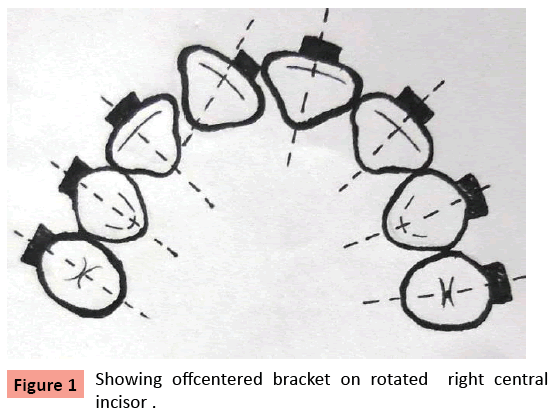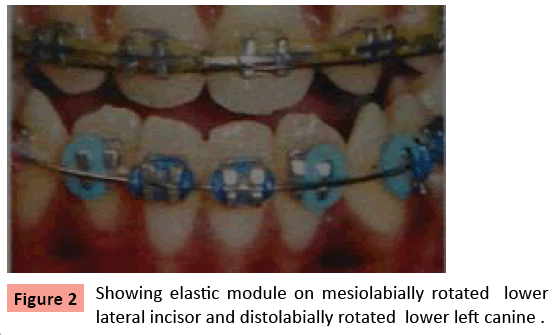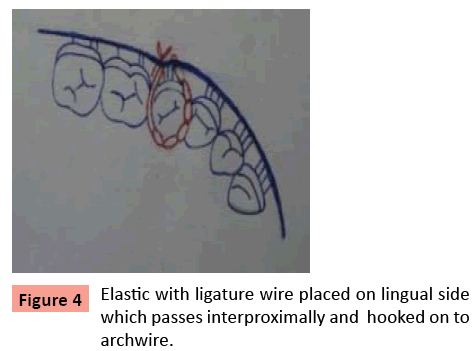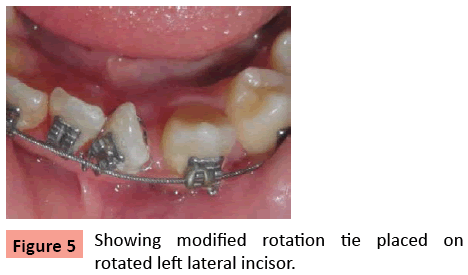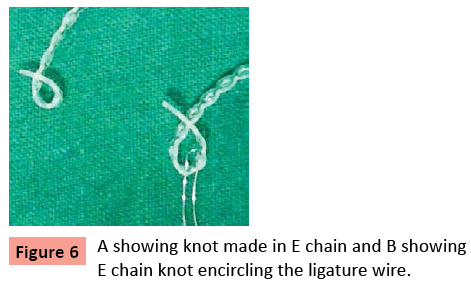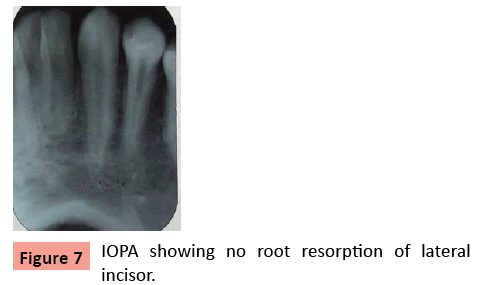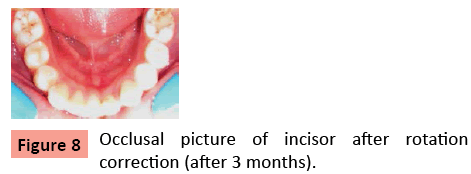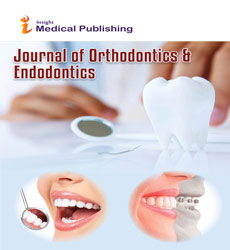Rapid Correction Of Rotation With Modified Rotation Tie
Neeraj Hirpara and Sandhya Jain
Govt College of dentistry orthodontics, Indore, M.P, INDIA
- *Corresponding Author:
- Neeraj Hirpara
Govt College of dentistry orthodontics
Indore, M.P, INDIA
Tel: 0942504545
E-mail: drneerajhirpara@yahoo.in
Received date: 15 July 2015; Accepted date: 08 September 2015; Published date: 17 September 2015
Abstract
Tooth rotation, is defined as mesiolingual or distolingual intra-alveolar displacement of the tooth around its longitudinal axis [1]. Number of factors are involved in the rotation of teeth like space inadequacy, abnormal tooth eruption sequence, and undesirable forces exerted by the tongue and lips or any above combination. Biomechanical principles involve application of single or couple of force for correction of rotation. Rotated teeth can be corrected by removable, semifixed or fixed appliance depending upon the severity of rotation. Removable appliance containing z spring along with labial bow and semifixed (whip appliance) [2] can treat mild rotations. Fixed appliance is a treatment of choice for severe rotations of teeth [3].
Introduction
“Tooth rotation, is defined as mesiolingual or distolingual intraalveolar displacement of the tooth around its longitudinal axis” [1].
Number of factors are involved in the rotation of teeth like space inadequacy, abnormal tooth eruption sequence, and undesirable forces exerted by the tongue and lips or any above combination. Biomechanical principles involve application of single or couple of force for correction of rotation. Rotated teeth can be corrected by removable, semifixed or fixed appliance depending upon the severity of rotation. Removable appliance containing z spring along with labial bow and semifixed (whip appliance) [2] can treat mild rotations. Fixed appliance is a treatment of choice for severe rotations of teeth [3].
Derotation can be done by number of ways with fixed appliances
1. By engaging NiTi archwire into bracket slot. Because of its superelastic nature and creating 1st order couple as it regains its original shape.
2. Offcentered brackets bring slight over correction of rotations. It exerts greater pull force on the side having maximum rotation. Figure 1 showing placement of offcentered bracket on rotated right central incisor.
3. Rotation wedge brings over correction by exerting push force. Figure 2 showing placement of elastic module on distal tie wing of mesiolabially rotated both lower lateral incisor and mesial tie wing of distolabially rotated lower left canine.
4. Palatal/lingual attachments helps in engaging force from lingual side, thus couple force can be applied (from labially/ buccally placed bracket and lingual attachments).
5. Ligature rotation tie onto the arch wire acts by applying a couple of force to bring derotation.It is stretched from one side of the tooth needing rotation across its lingual surface and passed interproximaly and finally hooked onto the wire. Elastic thread can also be used in the same way.
6. Rotation spring can also be used in Beggs technique [4]. Figure 3 showing Beggs rotation spring.
Rapid Correction of Rotation with Modified Rotation Tie
The disadvantage of conventional rotation tie is that it requires frequent activations and patient need to be called every weekly to tighten ligature tie sometimes while tightening ligature wire breaks and also it takes more chair side time. Modified rotation tie works on same principle as that of conventional rotation tie i.e it also exerts couple to derotate the teeth. Using modified rotation tie rapid correction of rotation can be achieved within few days. Rotation tie was modified by using elastic module or elastic chain with steel ligature wire .Figure 4 showing schematic diagram of modified rotation tie that consist of both E chain and ligature wire in which E chain attached to mesial side of bracket and ligature wire attached to main arch wire. Figure 5 showing transparent elastic module attached to distal wing of bracket and ligature encircling the tooth to engage wire on mesial side of tooth. This applies light and continuous force over a period of time and brings effective tooth movement. Patient was recalled every fortnightly for activation.
Discussion
In this case rotated left lateral incisor was treated with modified rotation tie as we could not off center bracket because of crowding of teeth. There is certain limit up to which bracket can be off seated in cases of crowding of teeth. Modified rotation tie was used because it exerted light and continuous force. Using elastic chain/module along with ligature wire also increases interval duration between two appointments. Advantage of this modification is that patient can be recalled every fortnightly instead of every weekly. This simultaneously de crowds teeth also. Only the elastic chain needs to be changed by hooking it around ligature wire and threading it through one of its hole to make a knot (Figure 6 showing E chain knot with and without ligature wire. Rapid correction of rotation was achieved in three months. There was no root resorption as evident from IOPA (Figure 7 showing no root resorption associated with lateral incisor). Patient was given fixed retainer. Figure 8 showing complete correction of rotated lateral incisor. This modification of rotation tie is patient friendly as well as operator friendly.
References
- Baccetti T. (1998) Tooth rotation associated with aplasia of nonadjacent teeth. Angle Orthod. 68, 471–474.
- Jahanbin A (2010) Correction of a severely rotated maxillary central incisor with the Whip device. Saudi Dent J. 22: 41-44.
- Jayade VP. Refined Begg for modern times.p 79-80.
- Begg. PR, Kesling PC (1977)Begg orthodontic theory & technique, third edition. Phildapheia, WB Saunders Co..p.118
Open Access Journals
- Aquaculture & Veterinary Science
- Chemistry & Chemical Sciences
- Clinical Sciences
- Engineering
- General Science
- Genetics & Molecular Biology
- Health Care & Nursing
- Immunology & Microbiology
- Materials Science
- Mathematics & Physics
- Medical Sciences
- Neurology & Psychiatry
- Oncology & Cancer Science
- Pharmaceutical Sciences
